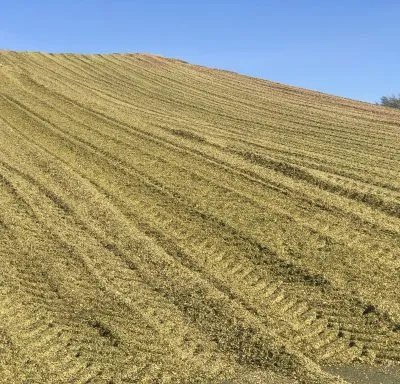BONSILAGE FORTE proven to rise to the low-pH challenge
For good silage, high pH is bad. For an efficient and proper fermentation to take place there needs to be a rapid pH drop early on.

Silage with high pH levels, especially wet and hard to ensile forages, are prone to the growth of unwanted microorganisms that can degrade important nutrients and produce unwanted by-products, and no one wants that. Especially your cows.
To keep those pH levels in check and protect your silage quality, you need a fast, consistent fermentation, and that’s not always easy to achieve, especially in the face of adversity. You need an inoculant that can handle whatever comes your way to keep the pH low and provide an efficient fermentation.
Recent trials suggest that BONSILAGE FORTE is that inoculant.
The Pearl of The Silage Game
We recently tested FORTE on pearl millet, a valuable forage source because of its ability to efficiently use water, grow relatively quickly, and have high nutritive value. The effects on the fermentation of pearl millet silage treated with FORTE are, well, we’ll just show you.
The pearl millet in this study featured a low DM and high ash levels, which can create an environment where the pH levels are slow to drop and unwanted organisms can flourish. This growth of unwanted microorganisms and excess protein degradation by protein-degrading enzymes can be avoided by applying an inoculant containing homolactic lactic acid bacteria (LAB) that will rapidly drop the pH.
We wanted to see if FORTE was up to the task.
FORTE kicked its Ash
As seen in Table 1, even with high ash levels and a low DM, FORTE dropped the pH in the early stages of fermentation, dropping pH levels 0.72 more than the control group on day 2 and maintaining that sizeable difference through day 6. It wasn’t until day 13 that the control group’s pH level even got close to FORTE. These low levels are critical to inhibiting unwanted microorganisms like clostridia and proteolytic enzymes in the early stages.
Table 1. The average DM content (%), pH, and ash (% DM) content of millet silage ensiled for 2, 6, and 13 days. Untreated silage (Control) or treated with BONSILAGE FORTE.
In a vacuum, these test results are great news. But with some added context, they’re even greater. FORTE’s early pH drops directly resulted in latter-stage ammonia-N levels that are more than twice as low as the control group by day 45, and more than three times lower by day 100. This is significant because high levels of ammonia indicated a major breakdown of proteins in your silage.
Table 2. The average DM content (%), pH, ash (% DM), ammonia-N (% of CP), and lactic acid (% of DM) of millet silage ensiled for 45 and 100 days, either untreated (Control) or treated with BONSILAGE FORTE.
Protecting Your Silage Early Pays Dividends Late
Because FORTE was able to rapidly drop the pH in the early stages of fermentation, this pearl millet was protected throughout the entire process. In the early test results, we show at least half a point difference in values and those values are maintained after 45 and 100 days of ensiling, despite the high ash and low DM content of this millet BONSILAGE FORTE was able to obtain a low pH.
The bottom line? BONSILAGE FORTE WS rapidly dropped the pH and improved the overall fermentation of pearl millet silage even when harvested and ensiled with a low DM and relatively high ash levels.
READ THE ENTIRE STUDY HERE

